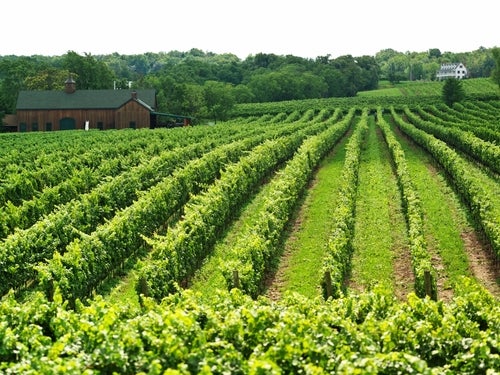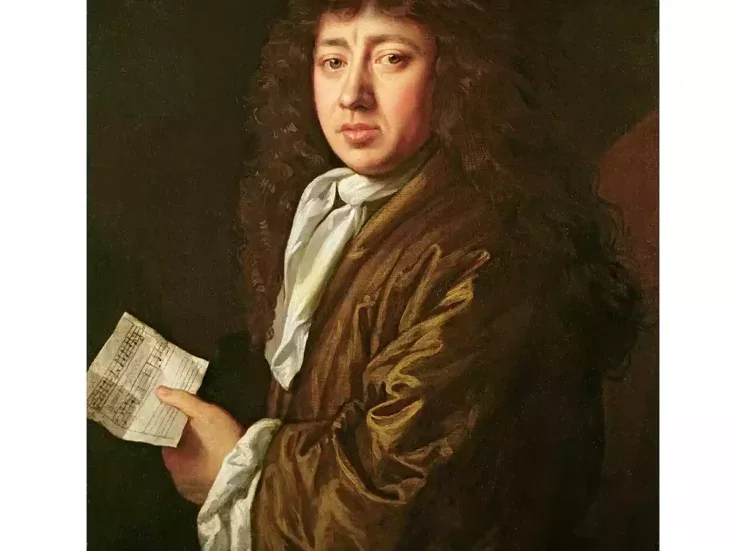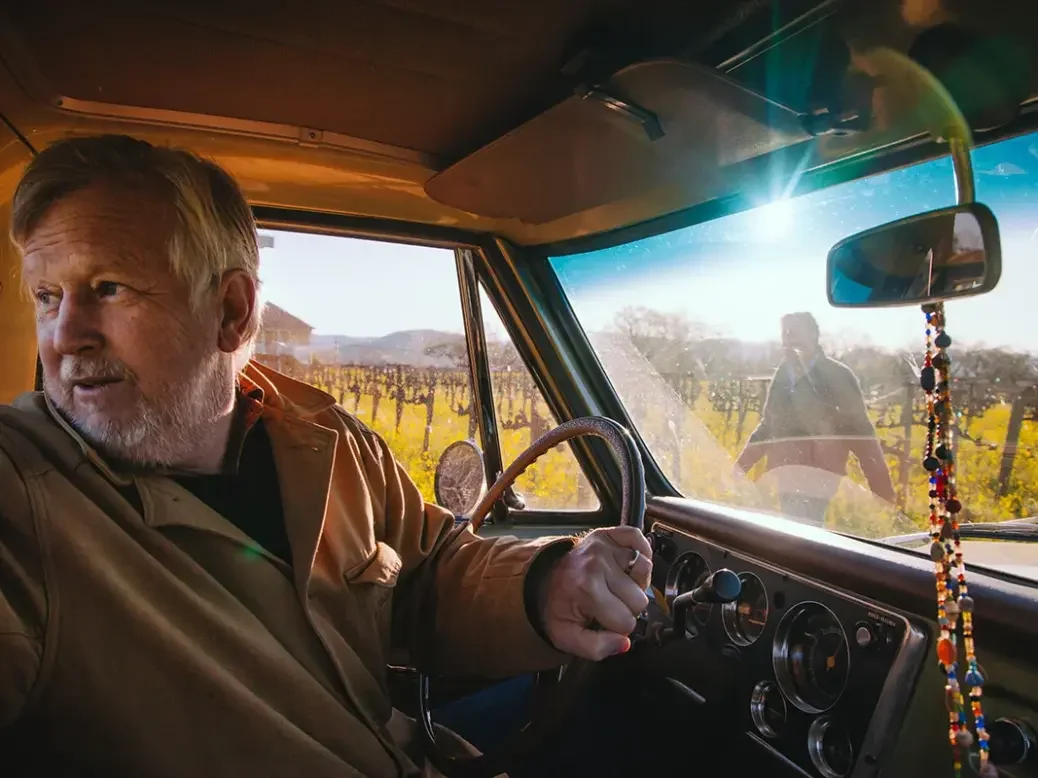
More than 2,000 bottles of Frog’s Leap have to be drunk every night to keep me in business,” says John Williams. A terrifying statistic, put like that. But perhaps less terrifying than to think of the number of liters of milk that would have to be drunk every day if he was a dairy farmer.
Which is not as irrelevant as it sounds. Williams grew up on a dairy farm in New York State, and in the summers he was sent off to his grandparents, who also had a farm. Then he had the chance to go to Cornell University, and that changed everything. Lots of things, anyway.
These were not the monster dairy farms of today; they were small enterprises. And if you wanted to trace these things back, you might find there the seeds of independent thought, an element of bloody-mindedness even, certainly a disdain for fashion, that you might note in Williams and in his career.
Why not cows? Nice creatures, cows. “They have to be milked twice a day,” says Williams. Anyway, he went to Cornell, still intending a life in dairy farming, and read fermentation science with a specialty—cheesemaking, in other words. (Blessed are the cheesemakers…) He got his BSc in 1975. In his sophomore year, there were opportunities for a work-study program, which seemed a good idea since funds were a bit short, but the only thing available was at the Taylor Wine Company. “As far as I knew, wine had nothing to do with farming. I found that out later.” He was the one in the lab coat, doing the scientific stuff. “There I was, with farming in the family, and I had a hard time stepping away from that. Where I grew up, everyone I knew had a relative in farming. I notice with young kids today, that connection has been lost. Farming has been consolidated into just a few people. I’m trying to ensure my grandchildren have that connection.” There are chickens at the winery, and he’ll send children out to get an egg. “They’ll say, ‘What are you going to do with it?’”
Williams has never lost his fascination with science, either. He’s fascinated by how things work in the natural world and the new tools, like genetics, that are developing so fast. “I’m fascinated by the nexus of the natural world, and peering underneath and seeing what’s making it work. It led to some arrogance in farming; we started to believe that because we had these chemicals, we were the masters. We do control it; we bend it to our purposes. But we were starting to see the downsides of that. I was at Cornell at the time of the civil rights movement and the Vietnam War, and we were starting to question things that we were being told as facts—[and not only] in agriculture. Those beautiful chemicals had repercussions.” From that sprang an interest in biodynamics. “Few growers had even heard the word when I first got interested.”
Williams went biodynamic; now he’s not biodynamic any more, but we’ll come back to that. For the moment, which is 1972, he’s at the Taylor Wine Company, watching “wines being diluted with water [and] blended with California wine; one of my tasks was to get samples for the lab. The guys, who were used to Catawba, tasted Napa wine with acidity and would say, ‘We can fix these up.’ Which meant adding sugar and labrusca varieties.” (None of this was illegal.)
He started tasting with friends—Bordeaux first growths and the like. “My first mentors in California were Warren Winiarski at Stag’s Leap and André Tchelistcheff. I had this duality in my life: winemaking chemistry on one hand, and on the other, André saying to taste it. Chemistry was less important [for him]. If I brought a sample to André, and he said the acidity is this and I’d measured it as that, I got it remeasured.” It’s the contrast, he says, between “the scientific world and the magic of understanding how things work, and observation.”
Actually, interviewing him is a bit like that. He’s not particularly interested in joining the dots of the narrative—the thoughts behind those dots, the ideas they provoked: those are what count.
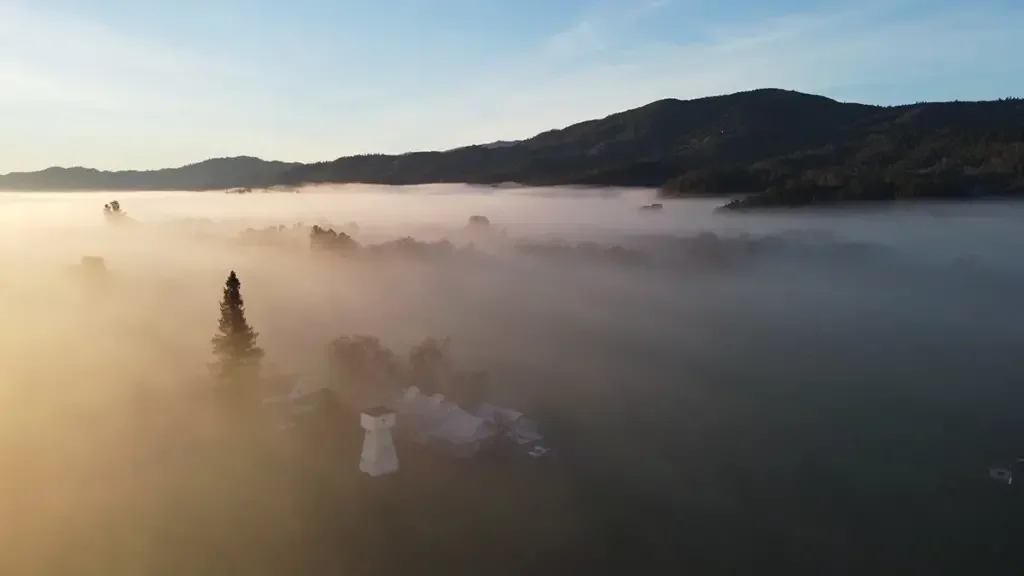
Coast to coast
In 1974, Williams went to California, and specifically to Napa. He camped out, as you would, and was discovered by the owner of the property, who happened to be Larry Turley. Naturally, they shared a couple of bottles of wine, and naturally, they decided to start a winery together.
In the meantime, Turley helped him get a job with Warren Winiarski. (I should point out that I am indebted to frogsleap.com for this basic narrative: You don’t waste precious interview time with Williams in getting him to repeat what he’s written elsewhere.) Williams was Winiarski’s only employee at that time. And he wrecked his new boss’s car on day five. (Winiarski continued, however, to be generous with cars: When I was staying at Stag’s Leap to interview Winiarski many, many years ago, he handed me car keys and told Sue Hodder and me—she’s chief winemaker at Wynns Coonawarra now, but she was working the vintage at Stag’s Leap then—to visit the Sonoma Coast. I’ve always had a sneaking feeling I may have been photographed speeding on the way back, because we were running late, but Winiarski never said a word. Thanks, Warren.)
Anyway, Williams took himself off to UC Davis to do a master’s in viticulture and enology. It took another few bottles of wine (sparkling Chardonnay made from grapes borrowed from Winiarski) for the name of his venture with Turley to emerge: Frog’s Leap. An odd name for a wine? It’s never done any harm to that vineyard in Chablis.
Come 1977, Williams finished at UC Davis and took a job as winemaker at the brand-new Glenora Wine Cellars in New York State’s Finger Lakes. And, says frogsleap.com, at the opening, in front of a crowd including the state’s lieutenant governor, a reverse-wired motor in the crusher spewed half a ton of Baco Noir at the spectators. They don’t do openings like that anymore.
Three years later, Williams was back in Napa as head winemaker at Spring Mountain. He got married to Julie Johnson and made the first wine with Turley, in a borrowed hot tub. He and Turley sold their motorbikes to raise enough money to start the project; no bank would oblige.
In 1981, Frog’s Leap was bonded and made its first official wines: Sauvignon Blanc and Zinfandel. The grapes were bought from Spottswoode. They continued to be bought in, even while Williams became more and more interested in organics, and he began to persuade his growers to go organic, partly by paying more if they did.
In 1985 he left work at Spring Mountain to concentrate on Frog’s Leap. But even though he could convince his growers to go organic and to dry farm, they still weren’t his vineyards. He says of that difference: “If I’d known then—to have had my own vineyard, actually planted the vines, seen the struggle as they grew, known them, introduced myself to them, developed a relationship with those vines… You can’t be a complete winemaker unless you’re out in the vineyards.” He talks of what he feels is the arrogance that can come from working with bought-in grapes that arrive at the winery. “It’s not the same relationship.”
“I tend to anthropomorphize vines,” he adds; and when he talks about the personality of a wine, he uses that word deliberately. The personality of a human being comes from “your heritage, your DNA, your ancestors, parents, grandparents, where you grew up, books, school, where you went to college; all the little things that act on someone’s life—what cultural events did you go to—all the things that shape a person and build a personality.” The vine equivalent would be “variety, rootstock, soil, water—from a black pipe or from the soil itself? The air it breathes, the fungi and everything in the soil; birds, bees, all the other plants; all the acts of pruners and pickers; the hands that shape the wine in the cellar, and the cellar it ages in. All these things give personality. If somebody only ever gets their news from one point, if they never go to the theater or read books, they have a one-dimensional personality; and so, too, with wines. To develop wines with personality, you have to raise them like a child, with a biodiverse soil—it’s about soil. Ten percent of our farming is other than grapes, and that is fundamental to terroir; things that communicate with grapevines. I can choose a barrel for a certain flavor, but these are small things in wine. You can take a person with no personality and give them makeup and clothes and a semblance of personality, but it’s not the same thing.”
Frog’s Leap
He didn’t have a vineyard of his own until 1997, by which time Larry Turley had sold his share of Frog’s Leap to the Williams family and started Turley Wine Cellars on the Frog Farm, meaning that Frog’s Leap had to move. Which it did, to Rutherford, where Williams took a long lease on a property called the Red Barn. It included the eponymous barn, which was partly collapsed, and some vineyards dying of phylloxera, which were revived, by dry farming, enough to give some grapes that first year. In 1995, he bought the property from Freemark Abbey. Now he had 40 acres (16ha) of vines, some newly planted orchards, and gardens.
At which point it is reasonable to ask: Now that you could do exactly as you wished, what influenced your decisions? Or who? “John Daniel at Inglenook,” he says. “Via his wines, because we never met—the wines from the 1950s and ’60s, from Rutherford terroir. Dr Konstantin Frank, who was a Russian emigré; he was convinced you could grow vinifera in Finger Lakes and was dismissed as weird and mad. Hermann Wiemer in Finger Lakes, very early in my career.” And in matters of the natural world, Amigo Bob Cantisano, an organic farmer/consultant/retailer who helped him develop farming protocols.
“It’s fine to be inspired by other people’s work,” says Williams. “But it’s bad to try and copy what they did. That’s not going to work. It’s painting by numbers.” So, is he happy with the wines he’s making now? “André [Tchelistcheff] had a way of talking about this. We were having a discussion about which was our favorite wine, a perfect wine; a wine we thought was the wine. André’s philosophy was that a wine is never perfect as long as you can still act on it. If you could make it better, you should. But once it’s in the bottle, once you’ve decided that it should go into bottle, you’re responsible. No wine is perfect before you bottle it, but it’s perfect after you’ve bottled it because you’re its parent, you’re responsible. You find value in the wine because you gave it your best. You have to accept that.”
And biodynamics? It was a lecture by Nicolas Joly that set him off. Williams had been farming organically for more than a decade, but he was interested in the deeper connections between plants and all living organisms. Eastern philosophy is a fascination, too, in particular Lao Tzu’s Tao Te Ching, which he describes as “the idea that there is a universal energy that flows through all organisms.” He goes on: “Although already convinced by the basic tenets of organic farming through the writings of Sir Albert Howard (An Agricultural Testament and The Soil and Health), I was trying to unite the eastern and western approaches.
“Of course, I read and reread Steiner’s Agriculture but found it confusing at best and a little absurd in reality. Goethe’s Wholeness of Nature was inspiring but related little to Steiner’s theories.” So, he enrolled at the Rudolf Steiner Institute for an intensive course in the practicalities, and he tried to put them into practice at Frog’s Leap. “I ultimately found little inspiration in the effort. At this point, the marketing value of biodynamics was becoming a dominant theme—and that was the final straw. We abandoned any claim to be biodynamic some years ago. Marketing and agriculture make strange bedfellows.”
‘‘I wish there were a word other than biodiversity,” he says later. “Permaculture,” he suggests: “allowing multiple species to interact at the same time.”
He’s not anti-biodynamism now—just skeptical of “those who embrace it with at least one eye on its marketing value.” It has deepened his understanding of organics, and he respects those who believe it helps their wines.
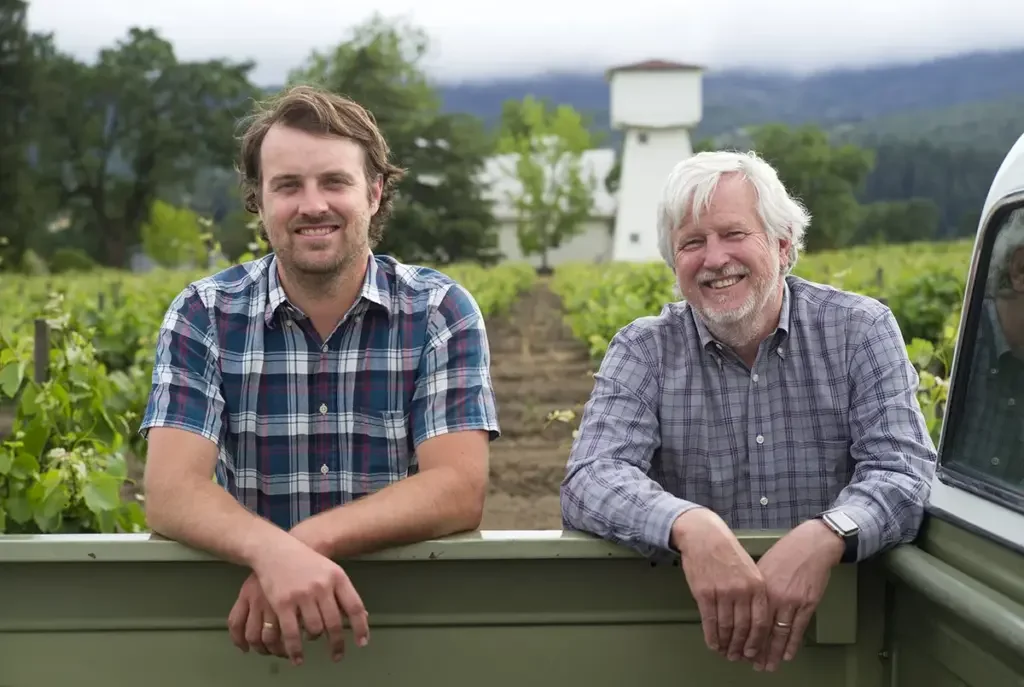
Organic growth
His own basic winemaking procedures haven’t changed in 40 years. “Change is very slow in winemaking, or it should be. There’s the danger of being reliant on getting 100 points; sudden success is very dangerous in wine. In pursuit of more success, you often change in ways you wouldn’t otherwise have done.”
And as for 100 points: “I award 100 points to all my wines. The criteria for 100 points as awarded by two major critics are anathema to me. They’re not to my economic benefit. We’ve been fortunate to grow everything very organically, and the people who support us in the market have also grown organically.” That’s when he mentions that more than 2,000 of his bottles have to be drunk every night. “It gives me great joy to know that there are that many people following our little winery.”
That organic growth, however, depended on the sort of frugality that hasn’t been terribly fashionable, though perhaps will become so again. “We started with nothing, and we always had to make a small profit to continue. We could take a small profit because we didn’t need a large profit. I don’t think I’m a fiscal genius. But I had good mentorship. I could learn the lessons of my father and grandfather, who were frugal and generous, but I’ve also had mentors who were the opposite, and I learned from them as well. The business came out of mentorship.”
He always had finance, “which is easy to get if you don’t need it, but if you need it, it’s almost impossible.” He was always able to provide for his family, but were there a few times when things got a bit close to the bone and the business was in danger? “Of course. But I’m a very optimistic person. Often problems are in our own head, like lack of confidence.”
The question always asked of independent producers is, would they sell? “I did the math a couple of times, and I realized that when I’d paid off people, I’d barely have enough to start another winery, so it didn’t make a lot of sense.”
The Frog’s Leap model is an unusual one for Napa, in that half the production is white: Chardonnay, Sauvignon Blanc, and Chenin Blanc, which fell victim to replanting but which will be made again; Grenache Blanc, too. Reds include Valdiguié (aka Napa Gamay), Chaban, Carignan, and Zinfandel; there are also two hybrids from UC Davis, a red and a white, both 99.99% vinifera, but resistant to Pierce’s disease. “Cabernet Sauvignon is grown in many places in Napa it shouldn’t be, but it’s more profitable to grow bad Cabernet Sauvignon than good Sauvignon Blanc.” Napa has 144 soil types, he points out, and temperature differences from top to bottom that are the equivalent of from the top of Norway to the south of Spain. “The reality of terroir is that whitewashing with one variety diminishes the value of that terroir.” Of course it’s simpler to make just one variety; your harvest is finished in a fortnight, with a lot of pickers, instead of the two months or so it takes at Frog’s Leap. “And we have other crops to fill out those months: peaches, olives, and so on.”
Are all those grapes and wines equally profitable? “I’ll have to work that out. We do small lots of some wines. There’s the wine club, The Fellowship of the Frog, and they’re rabid to try small lots, and it’s slightly more profitable that way.” And Williams does enjoy making white wine slightly more than making red. “It’s more challenging. The skills are greater, which tends to get forgotten. Sauvignon Blanc, especially—it’s the white people make because they need a white. I love reds, too, I’m especially challenged with Merlot, but white winemaking is a unique challenge. I’m a better white winemaker than a red winemaker.”
What about Chardonnay, then? Is it all about fashion? “If you allow it to be. We’re asleep to fashion here.” He quotes Jayer to the effect that Chardonnay is the triumph of technique over terroir. “Winemaking is more important than in any other variety, which is what led us all to travel to Burgundy in the hope of making Puligny-Montrachet. Trying to imitate someone by using their techniques is a fool’s game. I played that fool’s game for a long time. We use techniques now that don’t resemble how anyone in the entire world makes Chardonnay.” This means picking at low maturity for California, at about 22° of sugar rather than 25°, from 40-year-old vines that “are some of the oldest in Napa, with a nice balance of natural acidity.” They press whole clusters, settle, let the fermentation start with natural yeasts, then the fermenting juice goes into brand-new French oak barrels for about four days, and that is the only oak it sees. When it gets to a peak temperature of about 75° to 80°F (24° to 26.5°C), it’s run into lined concrete tanks to finish fermenting to dryness. “The biggest bugaboo in California is that no one can get them completely dry, and we do.” The wine stays there for one year, unracked. Then it’s racked, gets a bit of sulfur, and is bottled. “The goals are complete dryness, good acidity; we decide wine by wine on the malo, and we have lovely reductivity. It can be scary early on. I was talking with Laurent Ponsot in Burgundy—he doesn’t taste his wines until Easter, because they can be stinky, and one panics.”
One should never forget that Williams is a scientist. He’ll quote Omar Khayyam and read Lao Tzu “when I need to center myself again,” but he’s also a big reader of technical journals for the “unveiling of the secrets of the vine, often without complete understanding of what they’ve unveiled.” Winemaking, to him, is a craft. “That shouldn’t be ignored. I’m a big fan of natural wines, but I’m also a student of my craft. You can argue that a lot of winemaking is too safe, yes, and for many wines, that is not a bad idea. But there’s a growing class of wine that isn’t safe enough, or even properly made. I have a harder time understanding the goal of careless winemaking and faults.”
Williams and Julie divorced in 1999. In 2004 he went to a board meeting of the Napa Valley Vintners and “felt obligated” to greet the newest employee, Tori, who had just taken a job as communications director there. She didn’t stay at the NVV all that long, leaving to start her own business. She sold that business a couple of years ago, but by that time, she and Williams were married. “I recruited her to work at Frog’s Leap,” he says. “Tori is a huge support, and she runs all the farming other than vines. One has no life other than the winery; I’m focused on the business. One should never let that go unnoticed.”
Rory, the only one of his three children “to feel a passion for wine,” has joined Frog’s Leap and is in charge of all vineyard operations. “I’m jealous of him, having that experience in viticulture; what a privilege. I wish I’d had that. But there are many aspects to running a winery that have nothing to do with grapes and winemaking. Are those parts as attractive to him? Time will tell.”

